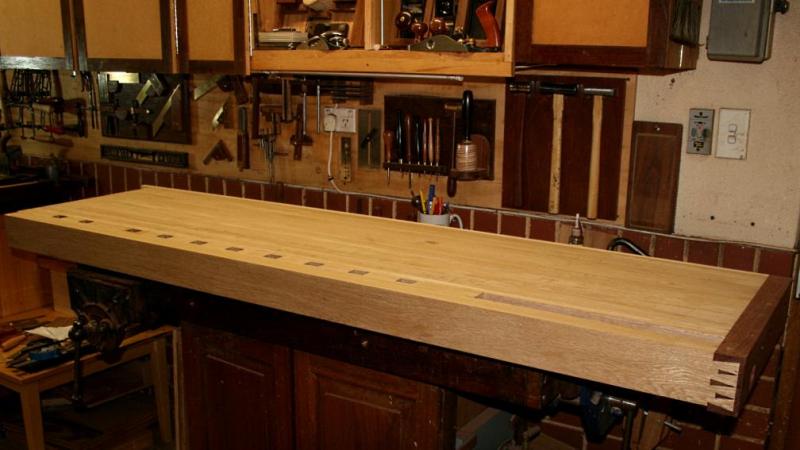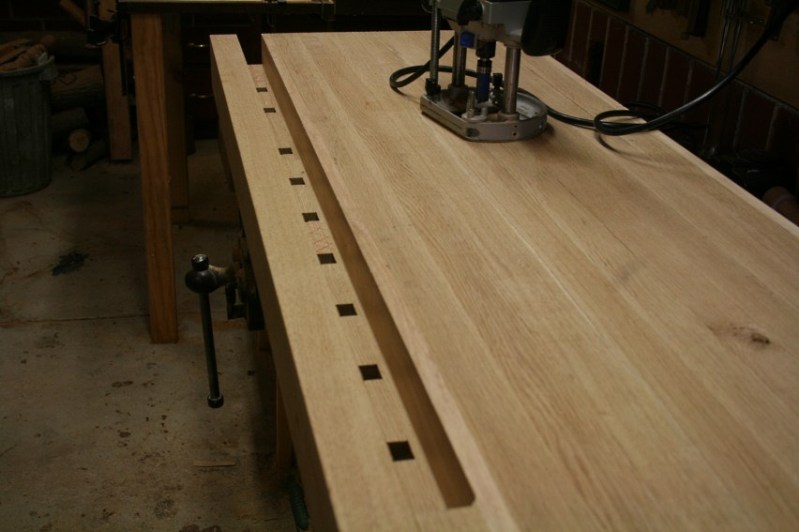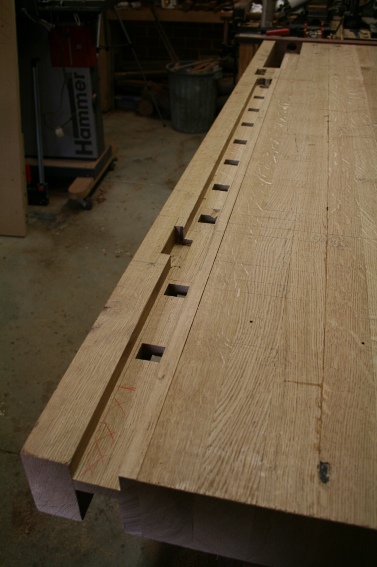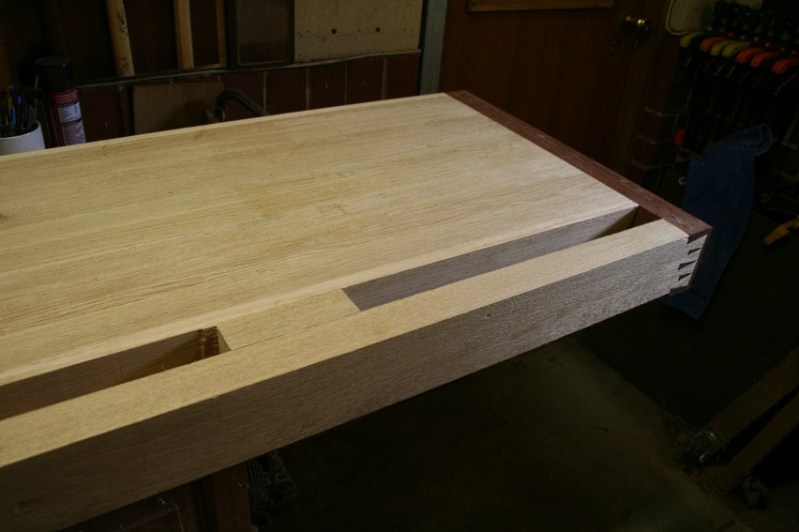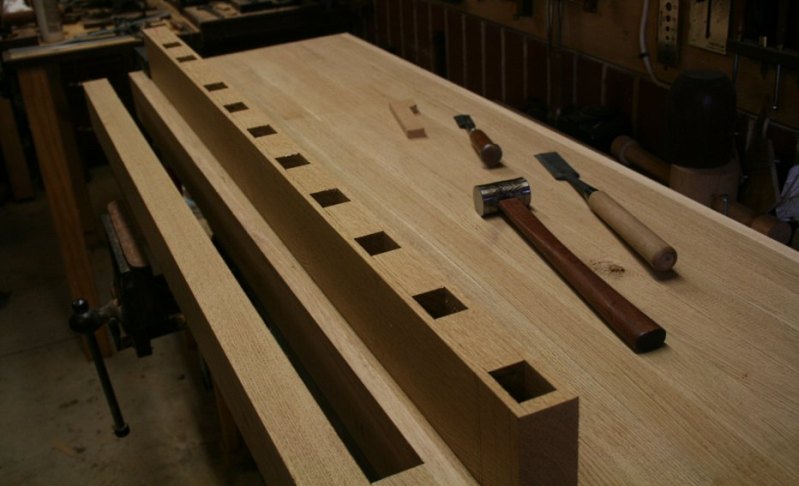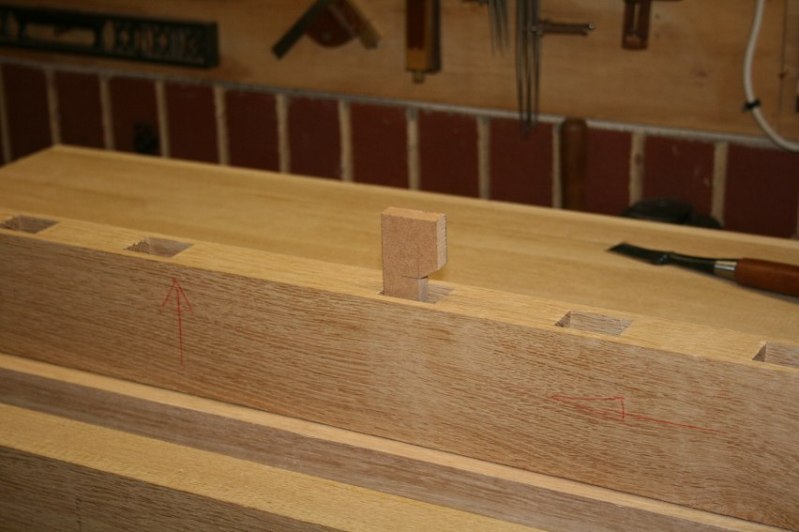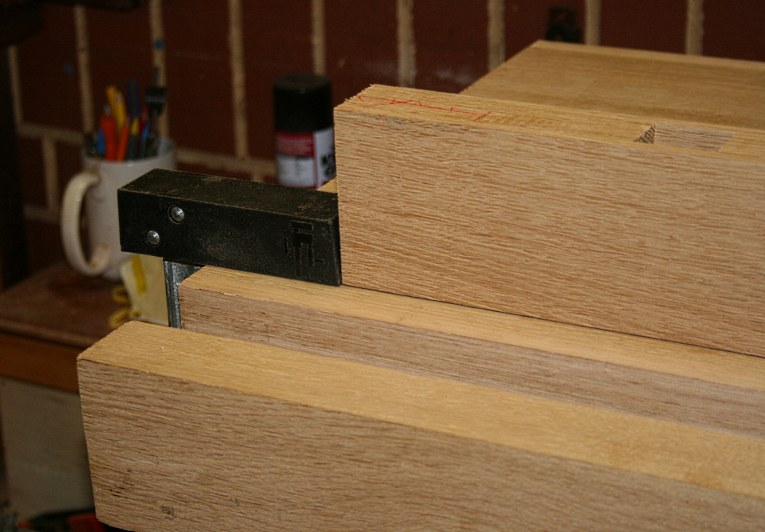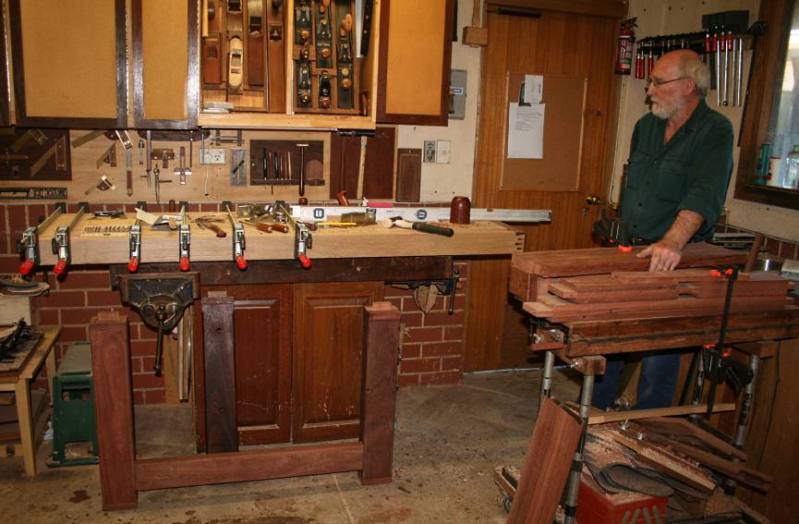I was building my work bench 10 years ago. Top done ...
And then Perry, my now ex-friend, discovered that I had inserted the dog strip back-to-front! B-u-gger. Looking through old photos I realised that the dry run had them the correct way, and I had marked them for the glue-up ... and then misread my markings. B-u-gger again.
A repair was complicated by the fact that the dogs angled 2 degrees ... now in the opposite direction!
Modifications as repairs are rarely satisfying. It is far better to have the Real Thing, even if this means pushing the envelope to do so.
The plan was to remove only the dog hole strip as far as the last dog hole. There is no need to touch the side board or the area for the tail vise, and the latter includes leaving the dovetail well alone.
I must say a big Thank You to Perry who came over on the weekend to help. I really could not have done this without him. The bench was rotated several times. Most importantly, Perry made sure I did not get anything back-to-front!
The main working tool here was a powered router. A series of guides were built to use with a bearing bit. The sides were deepened in a progressive manner. The trick is to rout close to the final dimensions only. If one attempts to hit the line first time, there is so much resistance from the wood that you may be forced with the grain and over the boundary. I routed to a few mm, and then took the final cuts at the line.
Also, the dog strip was used as a template for the "hole" by fitting it on top, and butting a fence against the edge. The bearing bit was then run against that fence. It required minimal tuning, and only a little chisel work at the end to square up. Of course, all this sounds easy, but it was exhausting as we worked for about 12 hours over the two days.
... keeping well away from the tail vise area ..
I had managed to beg another 4"x2" board in European Oak, and this was turned into a new dog strip with dogs 3" apart. This was an upgrade on the previous dog hole strip, where I joined pieces together having run out of this wood. It had look OK, but there were joins if one looked carefully. Now the strip was one continuous piece.
Checking that the strip ran in the correct direction!!!
A temporary planing stop while I fine tuned the insert ...
Here we are, glued up, the strip a little proud of the bench ... Perry looking on. Thanks again Perry.
Live and learn!
Regards from Perth
Derek




